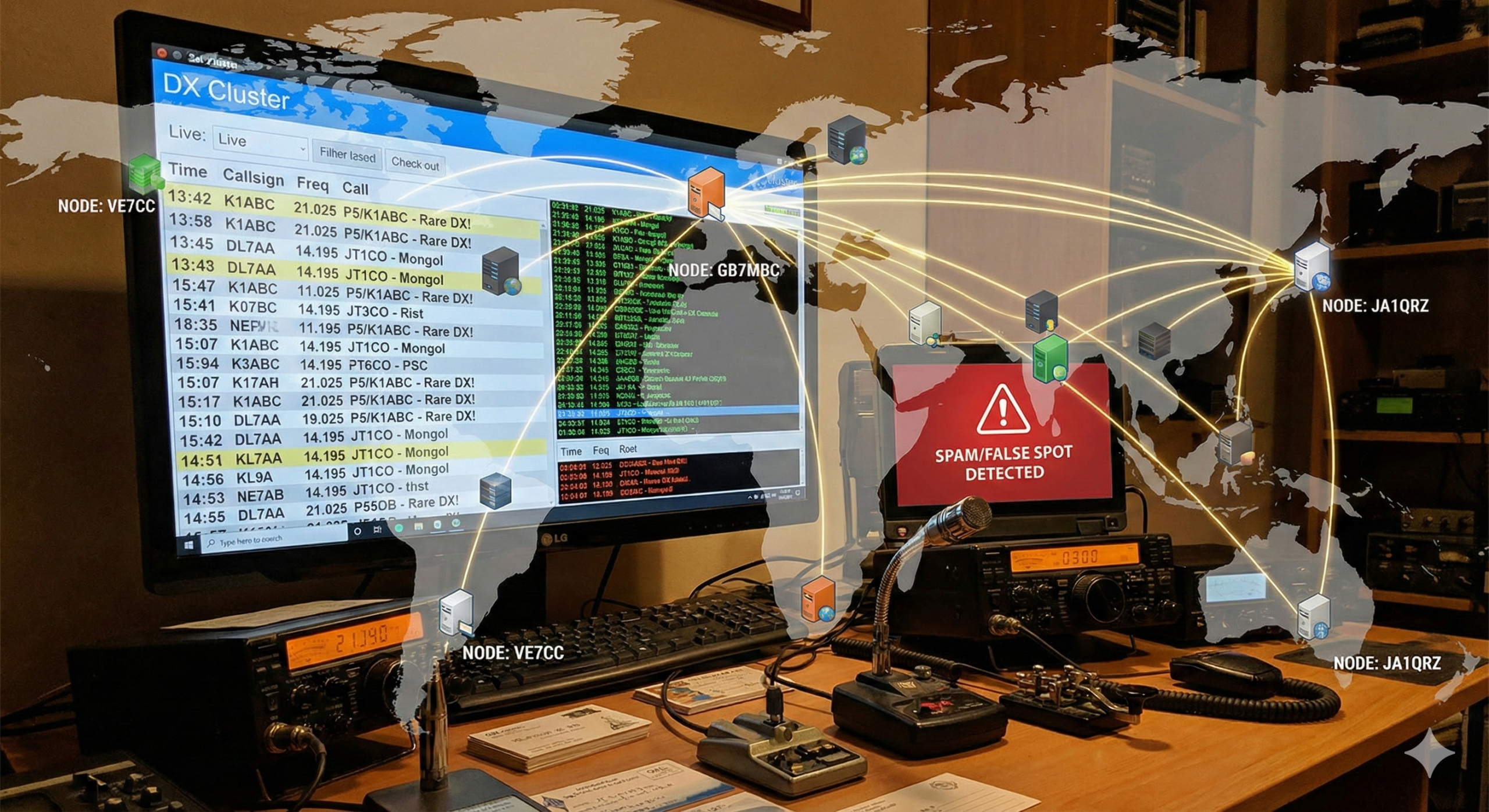amateur radio
debian
digital mode
fedora
ham radio
time
Time Synchronization
ubuntu
amateur radio, APRS, chrony, cloudflare ntp, computer networks, contest logging, cybersecurity, digital modes, eme, emergency communications, financial transactions, ft8, google time, gpsd, ham radio, jt65, logbook accuracy, meinberg ntp, network security, network time protocol, nist time, ntp, ntpd, ntpsec, openntpd, pool ntp, public ntp server, satellite communications, secure ntp, stratum 1, stratum 2, telecommunications, time synchronization, timestamps, windows time service, WSPR
9M2PJU
0 Comments
Understanding Public NTP Servers: A Vital Tool for Time Synchronization
In the world of networking and communications, precise time synchronization is crucial. Whether it’s ensuring that distributed systems operate in harmony or keeping logs accurate, time synchronization is fundamental. This is where the Network Time Protocol (NTP) comes into play, offering a way to synchronize clocks across computer networks. In this post, we’ll explore the origins and history of NTP, how it works, its practical applications, a list of top public NTP servers, the best NTP server software, and its benefits for amateur radio enthusiasts.
The Origin and History of NTP
NTP was designed by Dr. David L. Mills in 1985, making it one of the oldest Internet protocols still in use today. Developed at the University of Delaware, it was created to address the need for precise timekeeping in early computer networks. Over the decades, NTP has evolved, with various enhancements improving its accuracy, security, and resilience. Today, it is widely used in industries ranging from finance to telecommunications and even space exploration.
How NTP Works
NTP operates using a hierarchical structure, where highly accurate Stratum 1 servers (directly synchronized with atomic clocks or GPS time sources) provide time to Stratum 2 servers, which in turn distribute the time to lower-tier systems. This cascading model ensures minimal load on primary time sources while maintaining high accuracy.
NTP uses the UDP protocol on port 123 to communicate and follows a complex algorithm to measure and correct time discrepancies. It continuously adjusts system clocks by calculating round-trip delays and clock offsets, ensuring highly accurate synchronization over a network. Modern NTP implementations also support security features like NTS (Network Time Security) to prevent tampering and spoofing attacks.
Practical Uses of NTP
NTP serves a critical role in various fields, including:
- Computer Networks: Synchronizing timestamps in distributed systems to prevent errors in transaction logging and event tracking.
- Financial Transactions: Ensuring accurate timestamps for stock exchanges, banking operations, and digital payments.
- Telecommunications: Keeping voice and data networks in sync to prevent latency and synchronization issues.
- Cybersecurity: Validating cryptographic timestamps to enhance security and integrity.
- Space and Scientific Research: Ensuring precision timing in astronomical observations and experiments.
- Amateur Radio: Essential for digital modes, log synchronization, and accurate APRS positioning.
List of Top Public NTP Servers
There are many public NTP servers available for worldwide use. Some of the most reliable include:
- pool.ntp.org – A global cluster of NTP servers providing redundancy and availability.
- time.google.com – Google’s high-accuracy NTP service.
- time.windows.com – Microsoft’s default NTP service.
- time.apple.com – Apple’s time synchronization service.
- time.nist.gov – The U.S. National Institute of Standards and Technology’s official time server.
- ntp.ubuntu.com – Canonical’s NTP server for Ubuntu users.
- time.cloudflare.com – Cloudflare’s secure and highly accurate NTP service.
- time.macos.apple.com – Apple’s macOS-specific NTP service.
These servers ensure that users worldwide have access to precise and reliable time synchronization.
Best NTP Server Software
For those looking to set up their own NTP servers, here are some of the best available NTP server software solutions:
- ntpd (Network Time Protocol Daemon) – The most widely used NTP implementation, included in most Linux and Unix distributions.
- Chrony – A lightweight and highly accurate alternative to ntpd, ideal for systems with intermittent network connectivity.
- OpenNTPD – A simpler and more secure NTP daemon developed by the OpenBSD project.
- Windows Time Service (w32time) – The built-in NTP service for Windows operating systems.
- Meinberg NTP – A robust NTP distribution for Windows, based on the original ntpd.
- GPSD and NTPsec – Specialized solutions that provide precise time synchronization using GPS time sources.
Each of these options has its own strengths and is suited for different use cases, from enterprise-level deployments to personal and embedded applications.
Why NTP Matters for Amateur Radio
For amateur radio operators, accurate timekeeping is more than just a convenience—it’s a necessity. Here’s why:
1. Digital Modes and Weak Signal Communications
Many modern digital communication modes, such as FT8, JT65, and WSPR, require tight time synchronization. A clock drift of just a few seconds can lead to failed decodes or missed transmissions.
2. Accurate APRS Positioning
The Automatic Packet Reporting System (APRS) relies on timestamps to properly relay position and telemetry data. A misaligned clock can cause packets to be out of sync, leading to errors in location reporting.
3. Logbook Accuracy for Contests and QSOs
In amateur radio contests, accurate timestamps are crucial for log entries. Organizations like the ARRL and CQ Magazine require precise time records to verify QSOs and prevent disputes.
4. Satellite and Moonbounce Communications
When working with satellite communications and Earth-Moon-Earth (EME) contacts, precise timing ensures that transmissions and receptions are correctly aligned for optimal signal propagation.
5. Emergency Communications and Coordination
During emergencies, ARES, RACES, and other ham radio emergency networks rely on accurate logs and coordinated transmissions. A well-synchronized network ensures efficient communication between operators.
Conclusion
Public NTP servers play an essential role in time synchronization for a vast array of applications, including amateur radio. Whether you’re a network administrator, a financial analyst, or a ham radio operator, ensuring precise time synchronization improves reliability, accuracy, and efficiency. Leveraging public NTP services can significantly enhance digital communications, log accuracy, and overall operational effectiveness in the amateur radio world.
If you’re an amateur radio operator, take a moment to configure your system to use a reliable NTP server—you’ll notice the benefits immediately!







Post Comment